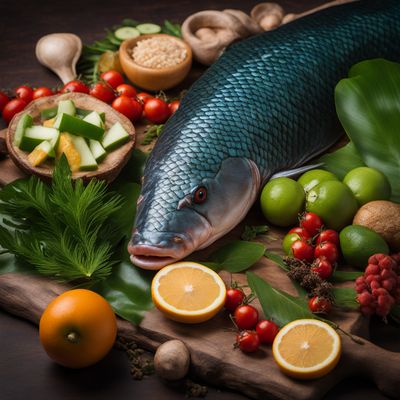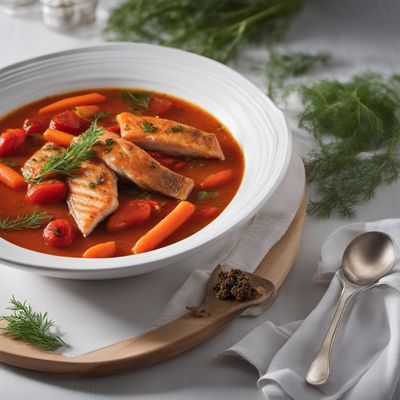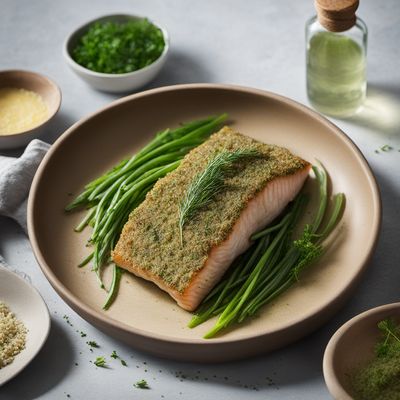
Ingredient
Pike-perch
The Delicate Delight
Pike-perch, also known as zander, is a freshwater fish with a firm, white flesh and a mild, slightly sweet flavor. Its texture is tender yet firm, making it suitable for grilling, pan-frying, or baking. The pike-perch has a slender, elongated body with a greenish-brown color on the back and silvery sides. Its delicate taste and flaky texture make it a popular choice for gourmet seafood dishes.
Origins and history
Pike-perch is native to Europe and is particularly abundant in the lakes and rivers of Scandinavia, Germany, and Eastern Europe. It has a long history of being a prized catch for anglers and a sought-after delicacy in European cuisine. In medieval times, pike-perch was considered a royal fish and was served at banquets and feasts. Today, it continues to be highly regarded for its culinary value and is a staple in traditional dishes like German zanderfilet and Finnish kuha.
Nutritional information
Pike-perch is a low-calorie fish that is rich in protein, omega-3 fatty acids, and essential minerals like selenium and phosphorus. A 3-ounce serving of pike-perch provides approximately 100 calories, 20 grams of protein, and 1 gram of fat.
Allergens
Fish
How to select
When selecting pike-perch, look for fish with clear, bright eyes, shiny skin, and a fresh, mild aroma. The flesh should be firm to the touch and have a vibrant color. Avoid fish with dull eyes, discolored skin, or a strong fishy smell, as these are signs of poor quality or age.
Storage recommendations
To maintain its freshness, pike-perch should be stored in the refrigerator at a temperature between 32°F and 39°F (0°C and 4°C). It is best to wrap the fish in moisture-proof paper or place it in an airtight container to prevent it from drying out. Fresh pike-perch should be consumed within 1-2 days of purchase.
How to produce
Pike-perch can be commercially farmed or caught in the wild. If you have access to a freshwater source, you can also consider raising pike-perch in a pond or tank. However, it requires specific conditions and expertise, so it is recommended to consult with aquaculture experts or fisheries before attempting to produce it on your own.
Preparation tips
Pike-perch can be prepared in various ways, including grilling, pan-frying, baking, or poaching. To enhance its delicate flavor, it can be marinated with herbs, lemon, or white wine before cooking. It pairs well with light sauces, such as beurre blanc or dill sauce. When grilling or pan-frying, it is important to cook the fish until it is opaque and flakes easily with a fork. Avoid overcooking, as it can result in a dry and rubbery texture.
Culinary uses
Pike-perch is commonly used in European cuisine, particularly in countries like Germany, Finland, and Poland. It is often featured in traditional dishes such as zanderfilet (pike-perch fillet), kuha (Finnish pike-perch soup), and sandacz (Polish pike-perch dish). Its delicate flavor and firm texture make it suitable for various preparations, including pan-fried fillets, fish stews, and fish cakes.
Availability
Pike-perch is commonly available in Europe, especially in countries like Germany, Finland, Poland, and Sweden. It can also be found in some specialty seafood markets or gourmet grocery stores in other parts of the world.
More ingredients from this category » Browse all

Perch, golden
The Golden Catch: Perch

Gourami (asia)
The Delicate Delight of Gourami

Dagaas
The Exotic Aroma of Dagaas

Mandarin fish
The Delicate Delight: Mandarin Fish

Snakeheads(=Murrels)
The Mighty Murrels

Climbing perch
The Aquatic Acrobat: Exploring the World of Climbing Perch

Arapaima
The Mighty Arapaima: A Culinary Treasure from the Amazon

Largemouth black bass
The Prized Catch: Largemouth Black Bass

White crappie
The Delicate Delight: Exploring White Crappie

Perch
Delicate Perch: A Freshwater Gem

African bonytongue
Exploring the African Bonytongue: A Delicacy from the Waters

Nile perch
The Mighty Fish of the Nile: Unveiling the Secrets of Nile Perch
Recipes using Pike-perch

Brandenburg-style Fish Patties
Savor the Flavors of Brandenburg with Delicious Fish Patties

Polish-style Sour Fish Stew
Zesty Polish Fish Stew: A Tangy Delight from the Baltic Sea

Luccio alla Gardesana
Lake Garda's Delightful Pike

Bosnian Baked Pike
Savory Delight: Bosnian Baked Pike with Herb Crust

Pan-Seared Pike in Garlic Sauce
Garlic Delight: Pan-Seared Pike in Serbian Style

Bulgarian-style Baked Pike
Savory Delight: Bulgarian Baked Pike with a Twist

Luxembourgian Herb-Crusted Pike
Savory Delight: Herb-Crusted Pike from Luxembourg